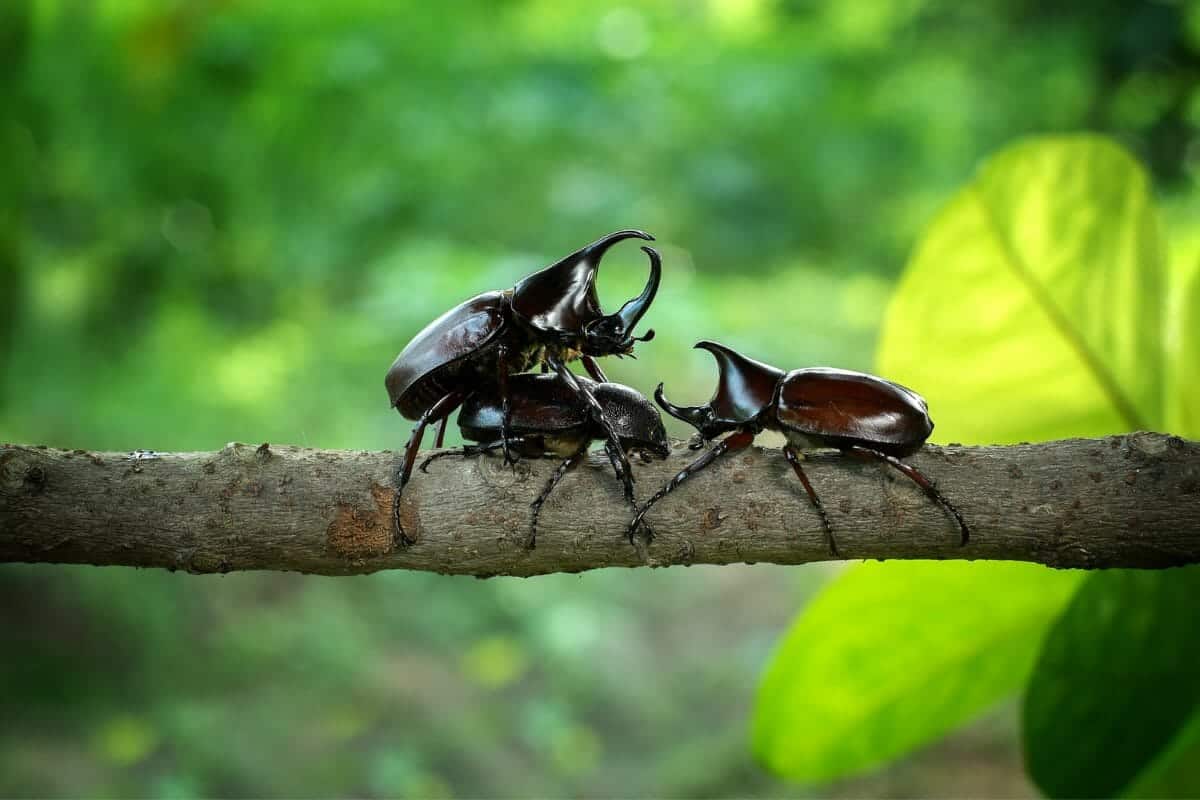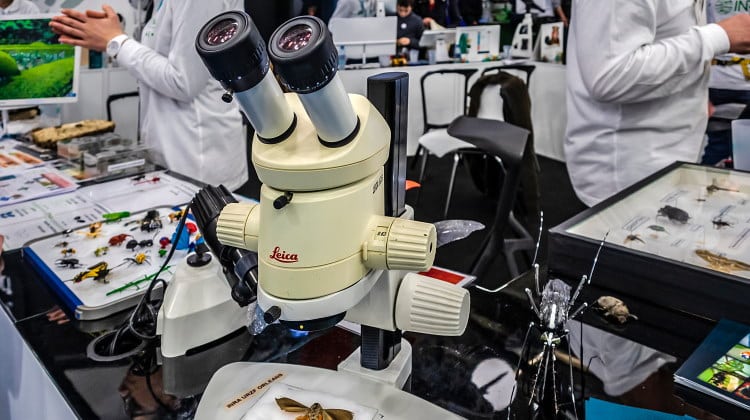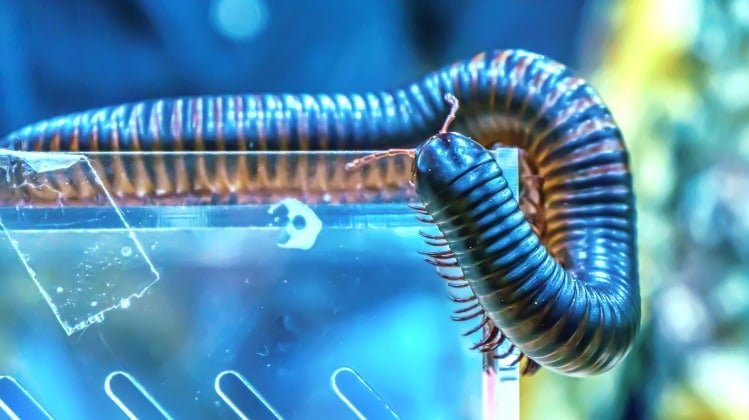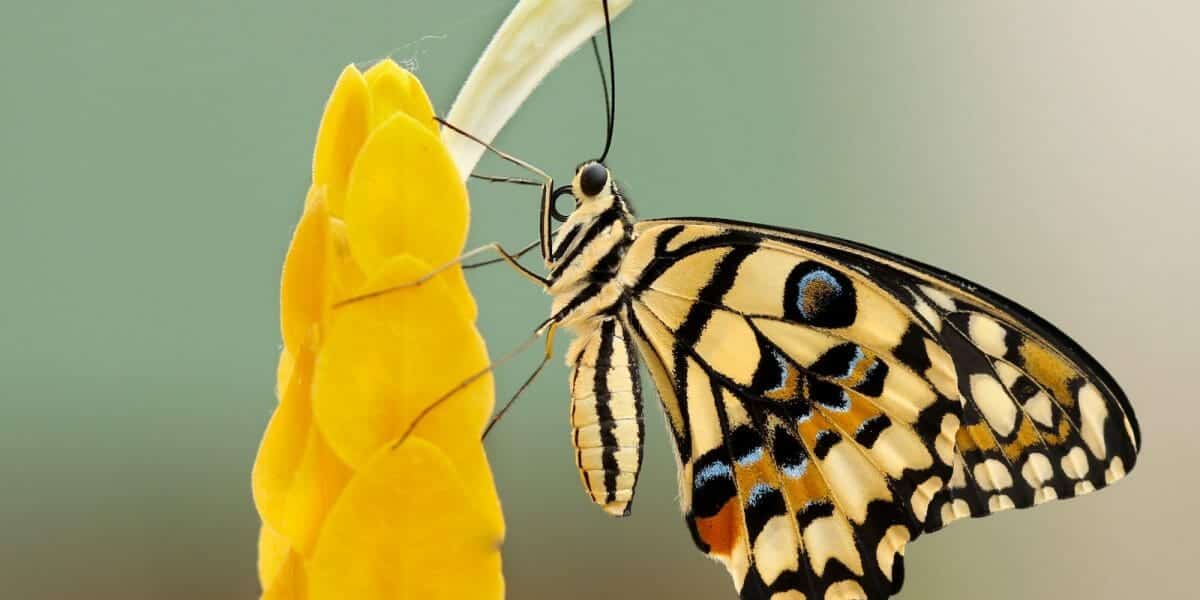Tingidae: Most Beautiful Family Of The “Lace Bugs”
One of my favourite groups of Heteropterans is the Lacebugs (Family Tingidae) and this is because they are truly beautiful.
They are very small bugs, generally less than 4 mm long and are all phytophagous (plant feeders). Some of them, in the genus Acalypta, of which there are 5 in the UK, feed entirely on mosses.
This is highly unusual for the True bugs, which usually feed on higher plants such as trees, shrubs, and grasses – or on other animals. There are about 1,800 species of Lace bugs in the world – of which about 20 live in the UK.
What makes these bugs so beautiful – and what gives them their name – is the densely reticulate (mesh or net-like) nature of their pronotum (the plate that covers the first thoracic segment) and hemi-elytra of the adults.
This makes them look like they are made out of lace.
Though the nymphs do not have wings and can not therefore look the same, many are covered with patterns of hairs and are quite pretty in their own rite. Many species overwinter as adults and can therefore sometimes be found on sunny winter days. One place you may want to look for them is underneath the leaves of your Strawberry plants.
Another place you may want to look during the winter is on Ivy. Here, if you are lucky, you may find the Ivy Lacebug Derephysia foliacea. If you do not find any in the winter, it will be worth looking again in late Summer.
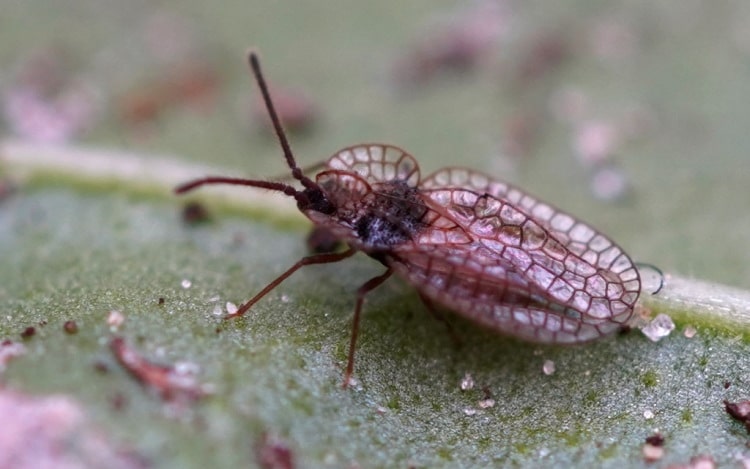
Two Lace Bugs worth looking out for in the Summer (in Europe) are the Creeping Thistle Lacebug Tingis ampliata and the Spear Thistle Lacebug Tingis cardui. Both of these little beauties feed primarily on the plants they take their names from, both as nymphs and as adults.
They lay their eggs in early Summer; T. cardui lays its on the tips of the leaves near the flowers, while T. ampliata inserts its into the stem of the plant, with just the top or cap of the egg showing so that the young can get out. The T. ampliata larvae spend most of their life feeding of the plants juices at a bud, while the T. cardui larvae spend theirs feeding at the base of a flower, often in the company of Aphids. Adults of T. cardui can be found on the food plants from late July onwards, but adults of T. ampliata are generally not around until late August. Both species overwinter as adults in leaf litter and moss somewhere near their host plants.
Another particularly attractive member of this family is the Water Forget-me-not Lacebug Monanthia humuli, which as its name suggests feeds on Water Forget-me-not. Again adults can be found from August onwards and they overwinter in leaf litter.
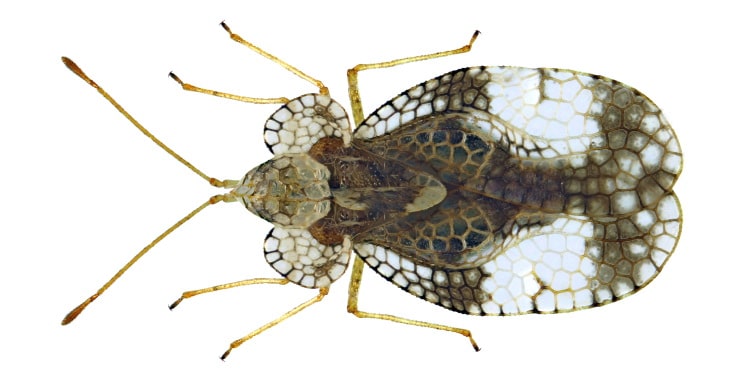
Though very beautiful, Lace bugs (being plant feeders) can become pests and in southern Europe Stephanitis pyri is a pest of Apple and Pear trees. In the UK, the introduced Stephanitis rhododendri was thought to be becoming a pest on Rhododendrons back in the Sixties – but has become much more scarce recently and is now not a problem.
Unlike the other species I have mentioned, Stephanitis sp. overwinter as an egg so you won’t be able to find them until the summer. On the other side of the coin, outside the UK Teleonemia scrupulosa the Scrupulous Lacebug has been used as a biological control of the pest plant Lantana.
Whether they are a pest or not, these small delicate bugs are a wonder to behold. However, you will need to have a look at them under a low-power microscope, in order to appreciate their true beauty.
What Next?
Well, I hope this introduction to the world of lace bugs has been interesting!
Perhaps now you’d like to learn a little about shield bugs?
Bibliography
- Dolling, W. R. (1991) The Hemiptera, Oxford University Press.
- Evans, J.W. (1963) The Phylogeny of the Homoptera, Annual Review of Entomology, 8 pp 77-94.
- Miller, N.C.E. (1971) The Biology of the Heteroptera 2nd Ed. Hill, London.
- Slater, J.A. and Baranowski, R.M. (1978) How to Know the True Bugs (Hemiptera-Heteroptera) William Brown, Dubuque, Iowa.
- Southwood, T.R.E. (1959) Land and Water Bugs of The British Isles Warne, London.
- Stondahl, G.M. and Dolling, W.R. (1991) Heteroptera identification: A reference guide, with special emphasis on economic groups, Journal of Natural History, 25 pp 1027-1066
D. foliacea Image license: Creative Commons

